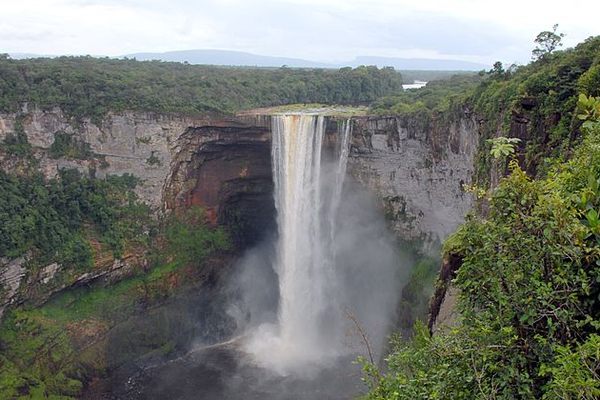Fort Kyk-Over-Al
A brick arch is all that remains of this Dutch fort, once a focal point for colonial power struggles in Guyana.
All that remains of Fort Kyk-Over-Al is a small brick archway and some scattered foundations. But in its heyday, this small Dutch fort was an important center of colonial operations in the region, and a target for rival British forces.
In 1616, Dutch colonists came to what is now Guyana to create a colonial stronghold in the region. They traveled from the coast up the Essequibo River and created a strategically-located trading post on a 1.5-acre island near the confluence of the Essequibo, Mazaruni and Cuyuni Rivers.
Here, under the command of the Dutch captain Adrian Groenewegen (who had been sent by the Anglo-Dutch firm of Courteen and Company to establish a settlement in Essequibo) they built a small star-shaped fort. Armed with just a few guns, it was possibly one of the smallest forts ever built by the Dutch overseas.
The new fort was initially named Fort ter Hoogen, after an influential Dutch businessman. But it was soon renamed in a more descriptive manner: Kyk-Over-Al, meaning “see over all,” in reference to the fort’s commanding views of the rivers.
Groenewegen was particularly interested in exploration and trade, and was soon trading successfully with the indigenous population, with Kyk-Over-Al at the heart of these operations. In turn, however, Kyk-Over-Al became a tempting target for British colonial interests in the region.
In 1665, Major John Scott was sent by the Governor of Barbados, Lord Willoughby, to invade the settlements in the Pomeroon and Essequibo. After seizing the settlement of Nova Zeelandia with his Carib allies, Scott pushed further up the Essequibo River and occupied Kyk-Over-Al with just 20 men.
Scott was overstretched, however, and couldn’t hold the fort for long. The Dutch Commander of the colonial settlement of Berbice, Matthys Bergenaar, marched overland with a group of soldiers and retook Kyk-Over-Al. At the same time, a French force, allied with the Dutch, besieged the 50 English troops left at Nova Zeelandia and starved them into surrender, and they were soon after massacred by the Arawaks, who were allied with the French.
Kyk-Over-Al was redeveloped after the British attacks and, by 1676, trade and local sugarcane plantations were once again thriving. But while the British had backed away, French privateers were becoming increasingly active along the Essequibo River in the early 18th century. They launched attacks on settlements and forts along the river in 1708 to 1712, but were either driven away or paid a ransom to leave.
Despite standing strong for one hundred years, Fort Kyk-Over-Al was eventually abandoned. The small island had become overcrowded by 1716, and the decision was made to build a new fort on Fort Island, much closer to the mouth of the Essequibo River and the Atlantic Ocean.
Kyk-Over-Al soon outlived its usefulness. It was completely abandoned in 1748 and nearly all of the buildings on the island were demolished. Some of the materials were used to build a sugar mill at Plantation Duyenenburg on the Essequibo River.
Today, a single brick arch is all that remains of Fort Kyk-Over-Al. It was nonetheless declared a national monument in 1999 and is now managed by the National Trust of Guyana.
Know Before You Go
The ruins of Fort Kyk-Over-Al are located on a small island at the confluence of the Mazaruni and Cuyuni Rivers, about 47 miles southwest of Georgetown. The nearest town is Bartica on the left bank of the Essequibo River in Cuyuni-Mazaruni (Region 7), about two hours from Georgetown.












Follow us on Twitter to get the latest on the world's hidden wonders.
Like us on Facebook to get the latest on the world's hidden wonders.
Follow us on Twitter Like us on Facebook